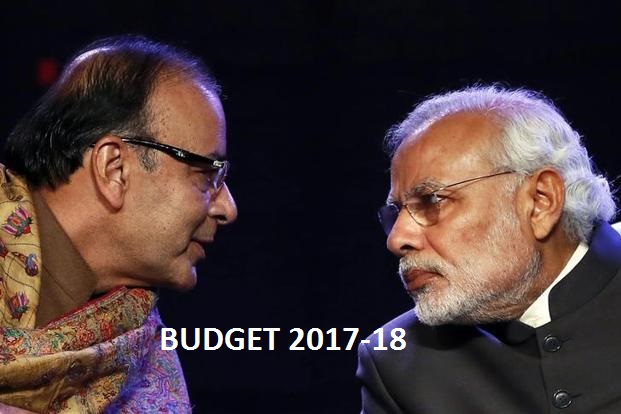The Annual Budget 2017-18 had been one of the most anticipated ones in recent times. On the backdrop of a demonetisation, which had halted the developmental ride of India, everyone had hoped that the budget would provide push to key industries and bring India’s growth back on track. So, let’s analyse the key points from the budget.
1. Demonetisation was a bold and decisive strike..
- Demonetisation will have transient impact on the economy. But in the long run it will lead to higher GDP growth, greater tax revenue, greater digitisation and lesser corruption.
- Pace of remonetisation has picked up and this will prevent any negative impact to spill over in the next year.
- Increase in personal tax collections is 34.8 % in last three quarter.
- The surplus liquidity in the banking system will lower borrowing costs (interest rates) and increase the access to credit.
Demonetisation is believed to be a successful move by the Government. India had seen only 3.7 cr individuals (out of an approx. 125 cr population) who had filled tax returns in 2015-16, out of which 99 lakh had showed income below the exemption limit. After Demonetisation, 1.09 cr bank accounts saw a a deposit between Rs 2 lakh and Rs 80 lakh. This shows we are a largely tax non-compliant society. The immediate benefits of Demonetisation can only be gauged after the names of the tax defaulters comes in the fore front. We will also have to wait for at least 2 years before we can actually see the long term benefits.
2. More steps will be taken to benefit the farmers..
- Agriculture sector is expected to grow at 4.1 % this fiscal.
- Government has committed to double the farm income in 5 years.
- Target for agricultural credit has been fixed at a record level of Rs 10 lakh cr.
- Coverage of ‘Fasal Bima Yojana‘ scheme will be increased from 30% of cropped area in 2016-17 to 40 % in 2017-18 and 50 % in 2018-19.
- Dairy processing and Infrastructure Development Fund would be set up by NABARD with a corpus of Rs 80 bn.
- Dedicated Micro Irrigation fund in NABARD to be achieve ‘per drop more crop‘.
- Mini labs to be set up for soil testing in all 648 Krishi Vigyan Kendras in the country.
- The coverage of National Agricultural Market (e-NAM) will be expanded to 585 APMCs from the current 250 markets.
The increase in area under ‘Faisal Bima Yojana’ would lead to the reduction of the loss of farmers due to crop failures and support their cash flows. With the increase in e-NAM, farmers will get better prices for their produce (post harvest) in the market. The government looks focused to improve the sector that employs the largest number of people in the country. One may deduce that farmers will have better income from their produce in the future.
3. Functional autonomy of the railways is to be maintained..
- Capital and development expenditure pegged at Rs 1.31 lakh cr for railways in 2017-18 from Budget.
- Service charge on e-tickets booked through IRCTC will be withdrawn.
- A new Metro Rail Policy will be framed which would rationalize existing laws and facilitate greater private participation and investment in construction and operation.
- ‘Coach Mitra‘ facility to redress the grievances related to rail coaches.
- Proposal to feed ~7,000 railway stations with solar power.
- 500 stations will be differently abled friendly by providing lifts and escalators.
- Rs 1 lakh cr corpus for railway safety fund over five years.
- The shares of IRCTC , IRFC, IRCON to be listed on various stock exchanges.
The merging of the railway budget with the annual budget has been a historic decision. The Railways will save around Rs 10,000 cr annually as it will no longer pay dividend (after getting Rs 40,000 cr). The Government has pointed out that private investments are the way going forward. Also, travel comfort and safety of the passengers has been seen as an important aspect in this Budget.
4. We will continue the process of economic reform for the benefit of the poor..
- Allocation under MNREGA increased to Rs 480 bn (highest ever).
- Women participation in MNREGA has increased from 48% to 55%.
- Skill Acquisition and Knowledge Awareness for Livelihood Promotion Programme (SANKALP) will be launched at a cost of Rs 40 bn to provide market relevant training to 35mn youth.
- Under ‘Maternity Benefit Scheme‘ Rs 6000 will be directly transferred to the bank accounts of pregnant women who undergo institutional delivery and vaccinated their children.
- Infrastructure status for affordable housing.
- 1 cr households to be brought out of poverty under ‘Antodya Scheme‘.
- ‘PM Awas Yojna Scheme‘ raised from Rs 15000 cr to Rs 23000 cr, to construct one crore houses by 2019 for homeless.
- The allocation for the welfare of the Scheduled castes has been increased by 35% compared to 2016-17.
- Government has targeted to eliminate leprosy by 2018, measels by 2020 and tuberculosis by 2025.
Affordable housing and more employment opportunities will definitely uplift the poorest people of this country. It was also anticipated that something in the lines of ‘Universal Basic Income‘ (UBI) would make it’s way into the budget. But seems like we will have to wait for it!
5. A proposal to mandate all government receipts through digital means..
- No transaction above Rs 3 lakh in cash will be allowed.
- Digi-Gaon will be launched to promote tele-medicine and education.
- Maximum amount of cash donation, a political party can receive, will be Rs 2000 from one person.
- Aadhar Pay, a merchant version of Aadhar Enabled Payment System, will be launched shortly.
- The Government will launch two new schemes to promote the usage of the BHIM app; these are Referral Bonus for individuals and Cashback Scheme for merchants.
A mission has been set up with a target of Rs 2500 cr digital transactions for 2017-18 via UPI, Aadhar Pay, IMPS and debit cards. After decisions such as GST and Demonetisation, these key reforms will definitely help to create a Digital Economy in the future.
6. Appeal to all citizens of India to contribute to Nation Building by making a small payment of 5 % tax..
- Income tax rate cut from 10% to 5% for individuals having income between Rs 2.5 lakh and Rs 5 lakh. This would mean a savings of Rs 12500 per person.
- 10% surcharge of tax payable on individual income above Rs 50 lakh and upto Rs 1 cr.
- 15% surcharge on income above Rs 1 cr to continue.
- MAT (Minimum Alternate Tax) credit benefit tenure increased to 15 years from 10 years currently.
- Customs duty on LNG halved to 2.5%.
- Increased allocation under MUDRA loans to Rs 2.44tn
“Tax the rich more” – The Government has clearly adopted this policy. The reforms seemed to be more towards appeasement of the salaried middle class. The higher allocation for Mudra loans will benefit the micro and small industries in the long term.
7. Our agenda for next year is to transform, energise and clean India..
- The World Bank expects India’s GDP growth rate at 7.6% in FY18.
- Government pegs fiscal deficit at 3.2% for 2017-18.
- Double digit inflation has been controlled; India is on a high growth.
- Government to further liberalise FDI policy.
- Sanitation coverage (under Swachh Bharat Abhiyaan) in villages increased from 42% in Oct 2016 to 60%.
- Rural spend has been increased by 53% to Rs 230 bn while urban spend has been increased by 20% to Rs 60 bn.
- Capital Expenditure (Capex) increased by 25.4% in FY18 over previous year.
- Total expenditure in FY18 at Rs 21.47 lakh cr.
- 133 Km road per day constructed, against 73 km per day previously.
- 100 % electrification of villages to be completed by May 2018.
- Integrated PSU Oil Major- Merger of oil PSUs across upstream, refining and marketing (OMCs, ONGC, Oil India)
The biggest let-down of the Budget..
As of June 2016, the total amount of Gross Non-Performing Assets (NPAs) for public and private sector banks is around Rs 6 lakh crore. The Budget did not seem to address this major problem which has crippled the financial system of India. There was no well-laid plan about tackling this issue. Only an announcement for deduction of provision for stressed loan increased to 8.5% from 7.5% was announced.
This Budget clearly shouts out one thing – “Fiscal consolidation at the price of growth”. There has not been any eye-bulging announcements, but there has been a slew of announcements pegged at improving the long term growth cycle of India.
Time to raise the coffee mug and feel proud about our nation !
(Please post your suggestions in the comment box)



Well written
LikeLike
Thanks Siddharth.
LikeLike